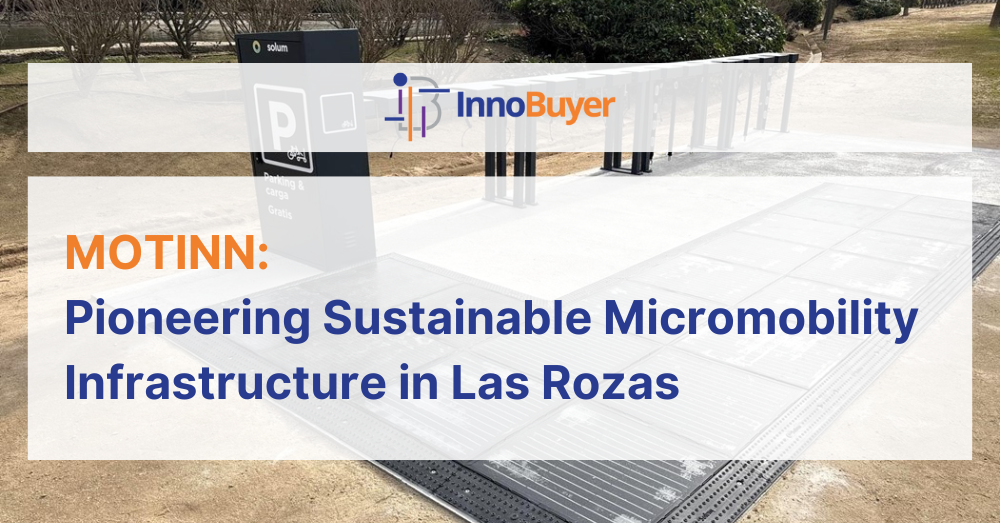The City Council of Las Rozas de Madrid is actively pursuing a greener urban landscape through the MOTINN project, an innovative collaboration with Solum focused on deploying solar-powered charging stations for Personal Mobility Vehicles (PMVs). This initiative exemplifies the transformative power of partnerships between public entities and forward-thinking solution providers to tackle urban challenges and champion sustainable mobility.
Development Phases and Milestones
The MOTINN project progressed through key phases, achieving milestones. Initially, Las Rozas and Solum collaborated to define specifications and select charging station locations, balancing accessibility, feasibility, and environmental impact, according to Luis Muñoz Lombardo, Co-Founder and CBO at Solum. The project then transitioned to software development, including a mobile app and monitoring platform. Rigorous testing followed, with real-world trials in Seville informing full deployment. Despite hardware and supply chain challenges, two charging stations were installed in Las Rozas by early 2025, with infrastructure adjustments completed for operation.
Key Successes and Accomplishments
The MOTINN project has seen notable successes, primarily the installation and activation of off-grid solar-powered PMV charging infrastructure in Las Rozas, demonstrating the viability of integrating renewable energy with micromobility. As Luis Muñoz Lombardo states, “the system functioned as expected,” with long-term adoption being assessed. The project has also gained national and international recognition, enhancing Las Rozas’s reputation for sustainable urban mobility through digital media interactions and showcases at forums like the Procura+ City Match and the Intelligent City Challenge Project.
Overcoming Development Challenges
The MOTINN project faced development challenges, including integrating new software and hardware, which required iterative user feedback and feature adjustments. Operational challenges involved balancing charging station usability with site constraints and infrastructure preparation. Adoption was hindered by installation delays, affecting usability and value assessment. Solum, the Solver, encountered financial challenges due to the absence of an initial payment milestone, as noted by Luis Muñoz Lombardo, which delayed manufacturing and complicated securing bank financing.
Lessons Learned
These challenges provided valuable lessons. It became clear that, in the words of Luis Muñoz Lombardo, “early real-world testing is essential” because lab simulations cannot fully replicate real-world conditions. The project highlighted the need for “stronger stakeholder coordination,” emphasizing that a more structured workflow between municipal departments and private providers can enhance efficiency and reduce delays. The importance of user awareness was underscored, with the realization that “adoption depends on clear communication and user education.” The project also stressed that “financial planning is critical,” suggesting that alternative funding strategies, such as public-private partnerships, should be explored to mitigate financial risks.
Stakeholder Engagement and Feedback
Stakeholder engagement has been central to the MOTINN project’s progress. The project involved continuous collaboration between Las Rozas, Solum, end-users, and mobility associations. Meetings were held both on-site and online to facilitate decision-making and ensure smooth coordination. Solum engaged directly with real users and key stakeholders, including mobility associations, to gather insights during the app’s development. Feedback on the beta version highlighted areas for improvement in user experience, stability, and performance. Stakeholders also emphasized the importance of optimizing charging station locations for better accessibility and adoption.
Future Plans
The next steps for the MOTINN project involve expanding the charging network, ensuring smooth adoption, and securing long-term sustainability. Two additional charging stations are planned for installation in 2025, and Las Rozas is conducting a study to identify 20 more locations for future deployment. Collaboration with relevant departments will streamline installation and infrastructure readiness. An important development is that, according to Luis Muñoz Lombardo, “a web-based platform has been fully implemented” to monitor station usage, detect technical issues, and analyze data trends. This will enable proactive maintenance, ensuring the reliability and performance of the charging stations.
Community and Sector Impact
The MOTINN project is designed to provide substantial benefits to end-users, the community, and the broader sector. End-users now have improved access to dedicated charging infrastructure, making micromobility options more convenient and reliable. This encourages the use of e-scooters and e-bikes for urban trips, reducing traffic congestion and complementing public transport. Solar-powered charging offers cost savings for users and contributes to energy efficiency and carbon footprint reduction. The presence of these chargers also supports the sustainability goals of local businesses and institutions.
The MOTINN project has also positively impacted Las Rozas. The project has demonstrated the value of working with startups like Solum, which provide innovative and cost-effective solutions. Las Rozas has gained valuable experience in engaging with SMEs, navigating financial risks and manufacturing delays while fostering technological advancements. This experience may influence future procurement strategies, allowing greater flexibility in selecting innovative partners. The pilot has laid the groundwork for a long-term expansion plan, and the experience gained will help streamline future rollouts.
Recommendations and Lessons for Innovation Procurement
For organizations implementing similar innovation procurement strategies, several recommendations and lessons can be drawn from the MOTINN project. The main recommendation, according to Luis Muñoz Lombardo, would be to “adapt the strategy to start-ups. It is crucial to acknowledge the financial constraints and limited resources of these companies. The procurement strategy “should guarantee a positive cashflow” for the project, and it should “clear the goal and outcome of the project” to minimize coordination and design time. The MOTINN project in Las Rozas stands as a powerful example of how innovation procurement can drive sustainable urban development. By fostering collaboration between public entities like Las Rozas and innovative solution providers like Solum, cities can effectively address challenges, promote sustainable practices, and enhance the quality of life for their citizens.


